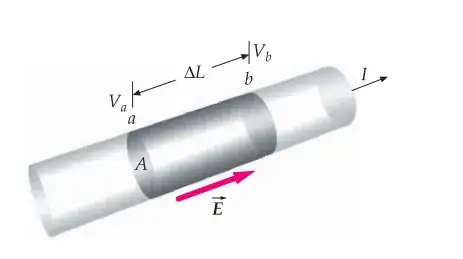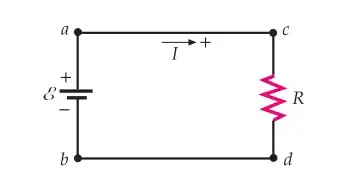Introduction: Resistance for a uniform cylindrical$^1$ thing in which "field is uniform and along the cylinder" (this can be equivalently replaced by "the same potential difference is constant across any point on one end any point on other") such that $I$ current flows through its CSA is defined as $R=\frac{\Delta V}{I}^{*},$ where $\Delta V$ is the potential difference between the ends of the cylinder.
Now consider the circuit. What is the potential difference across the resistor? You may say it is $\epsilon= \Delta V=IR.$
But how can you be sure? In answering it you assumed that
- The resistor is made of circular wire.
- You also assumed that the electric field in it is uniform.
- And that the direction of the field is along the wire.
The first is justified by that the books assume that the resistor is of CCR type. The second and third are bugging me.
Questions: The question is what short of field does a battery create inside a wire and anything at all in general? If a conductor of any shape, say bone-shaped, is connected to a battery via wires what short of the field will be produced (see $3^{rd}$ image)?
$1:$ Using integral calculus you can calculate resistance for any substance from this definition.
$*$: This is the definition of resistance and not Ohms Law. The law states that for such cylinder we have $\vec{E}=\rho \vec{J}$ where $\rho$ is constant for the type of material and $\vec{J}$ is current density, from this we derive that $R$ is constant for the particular object.


